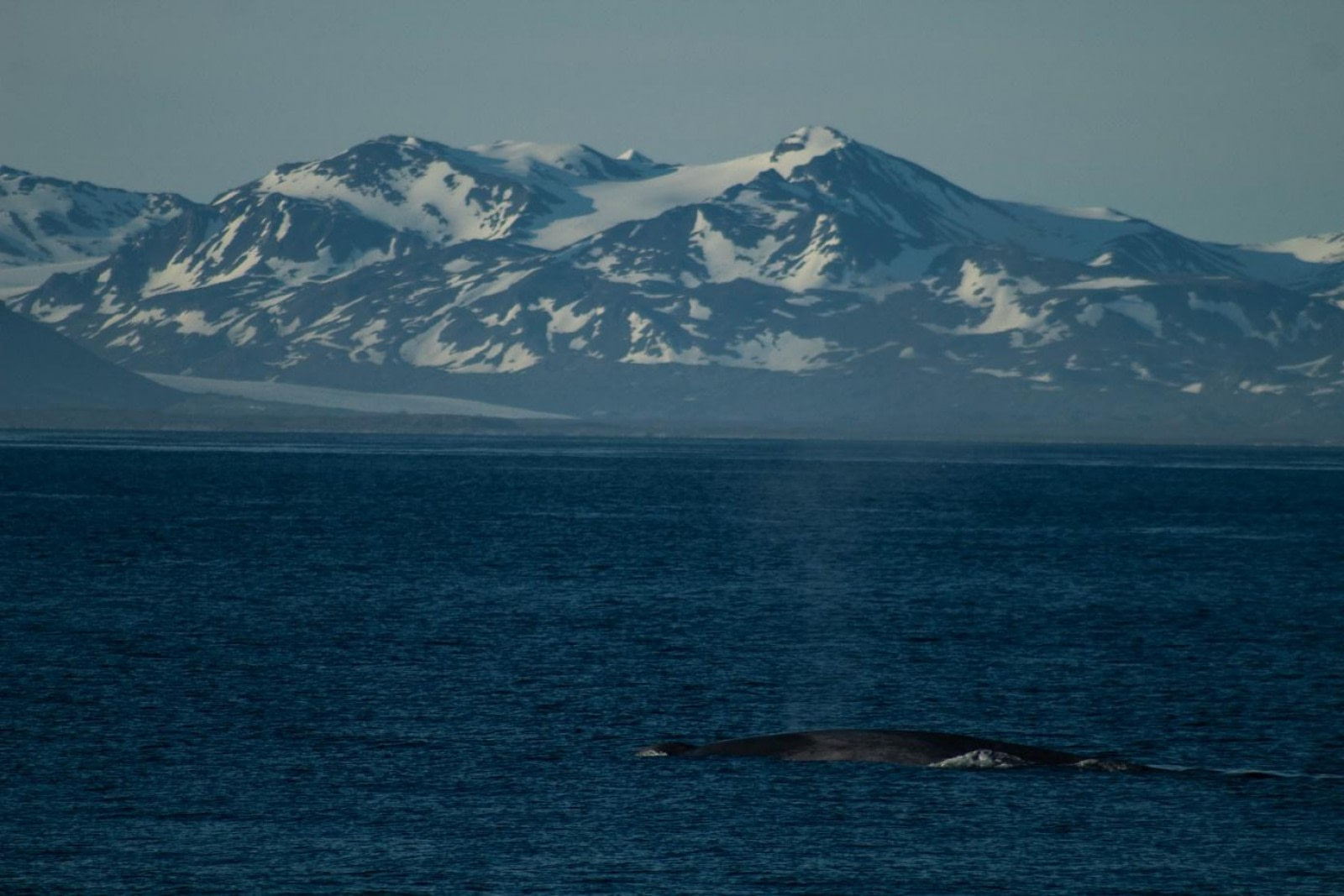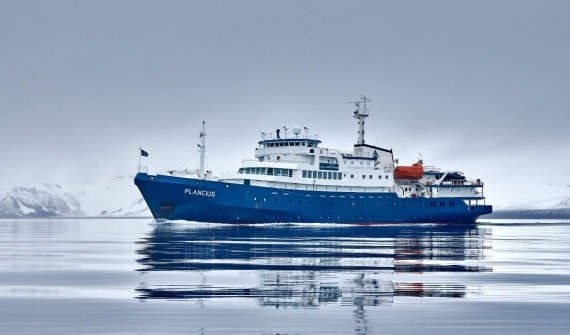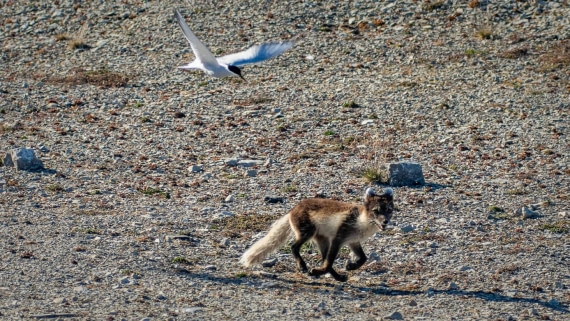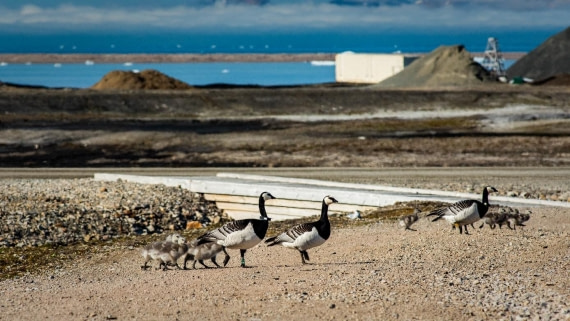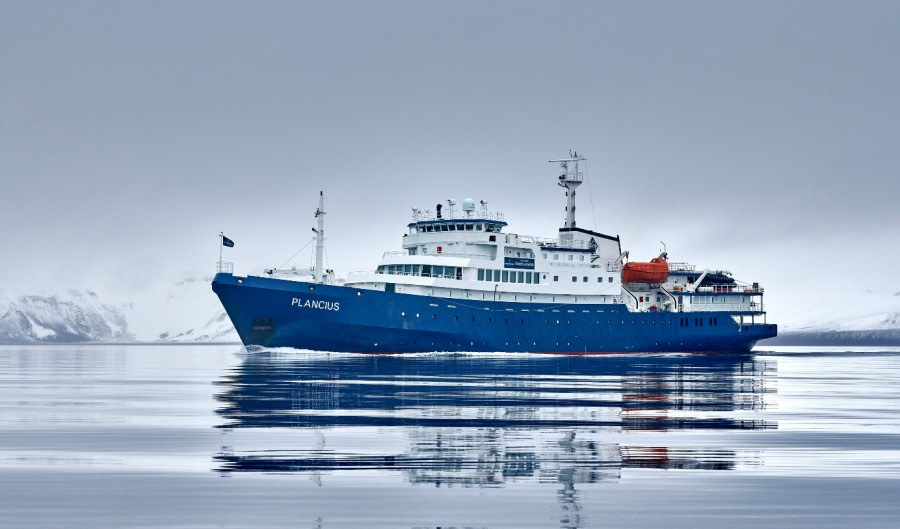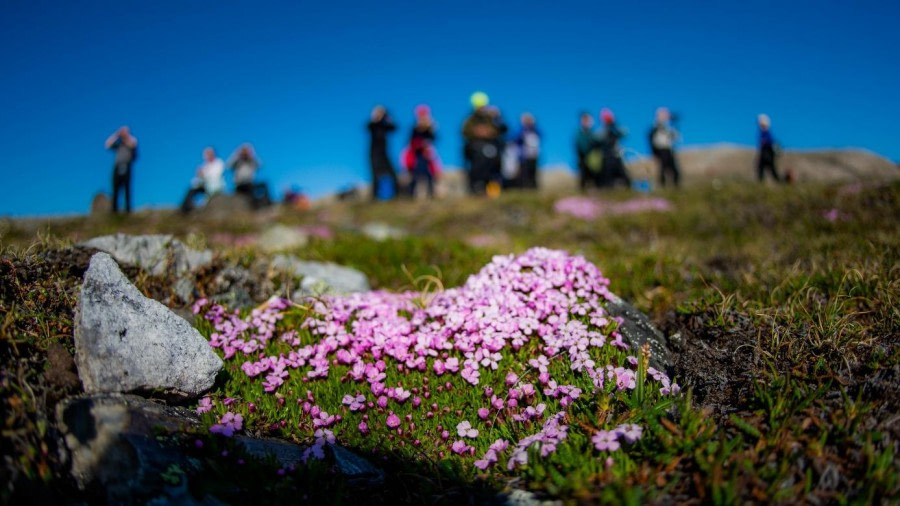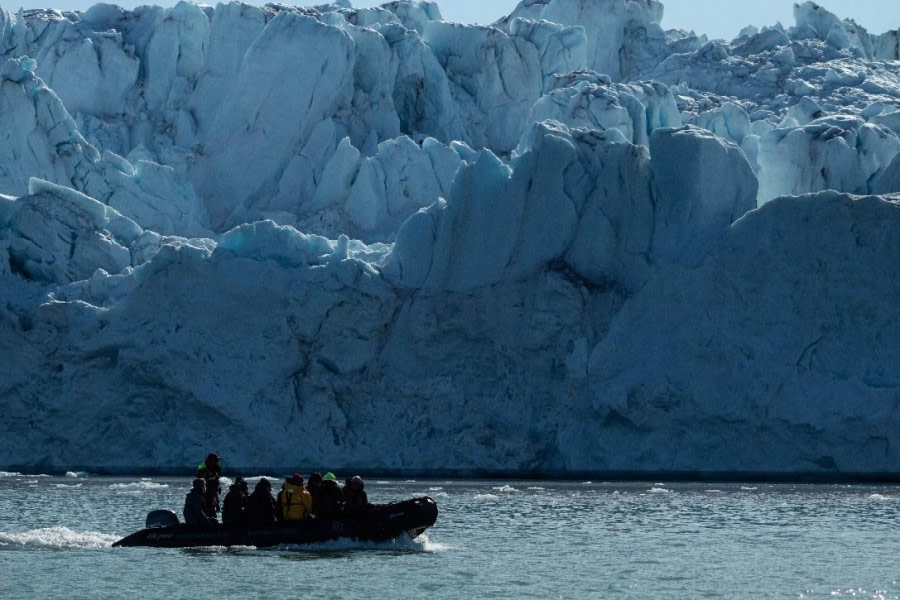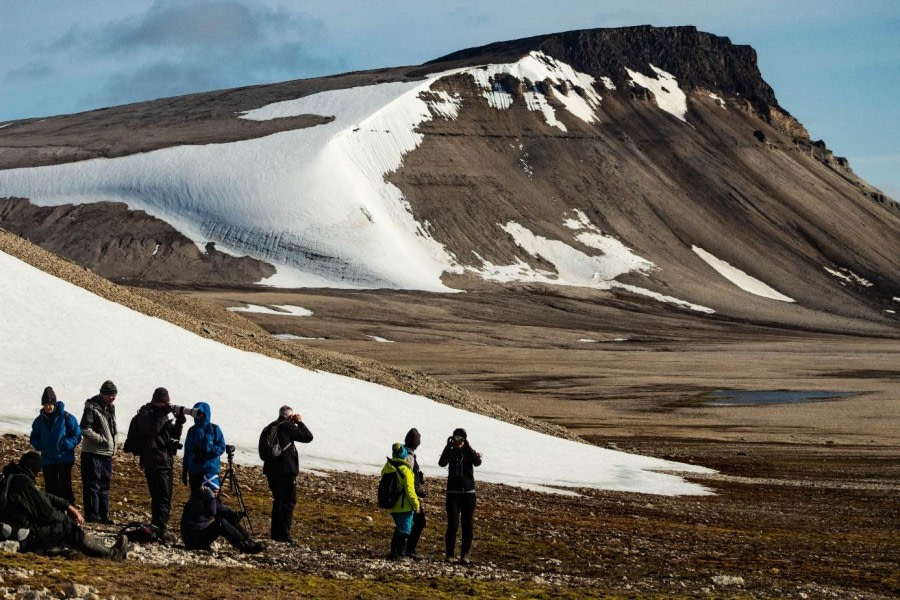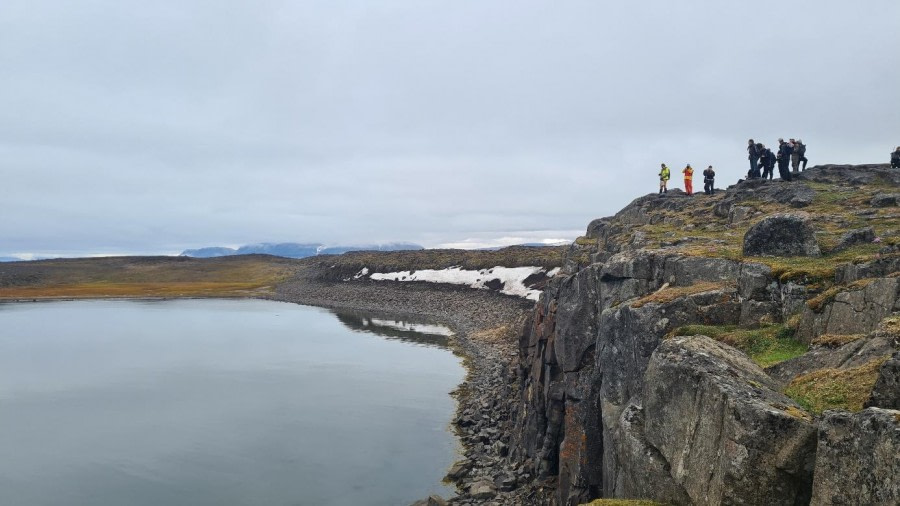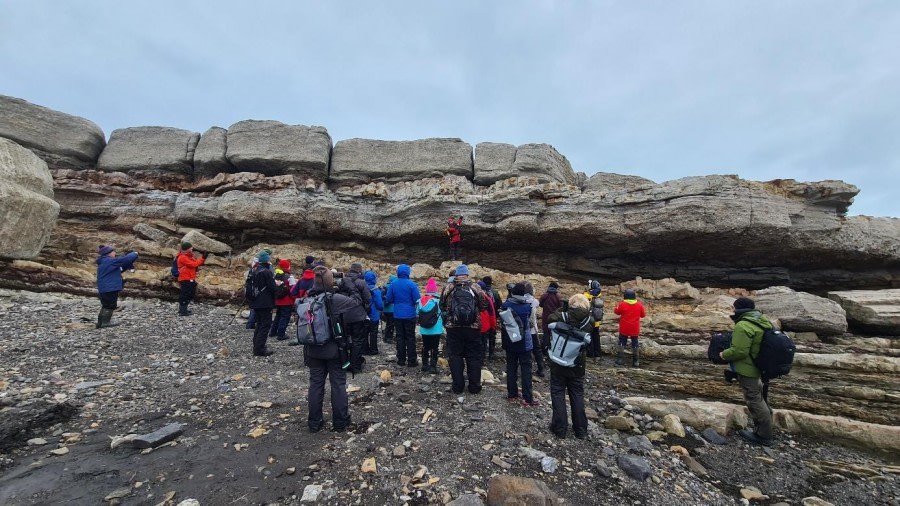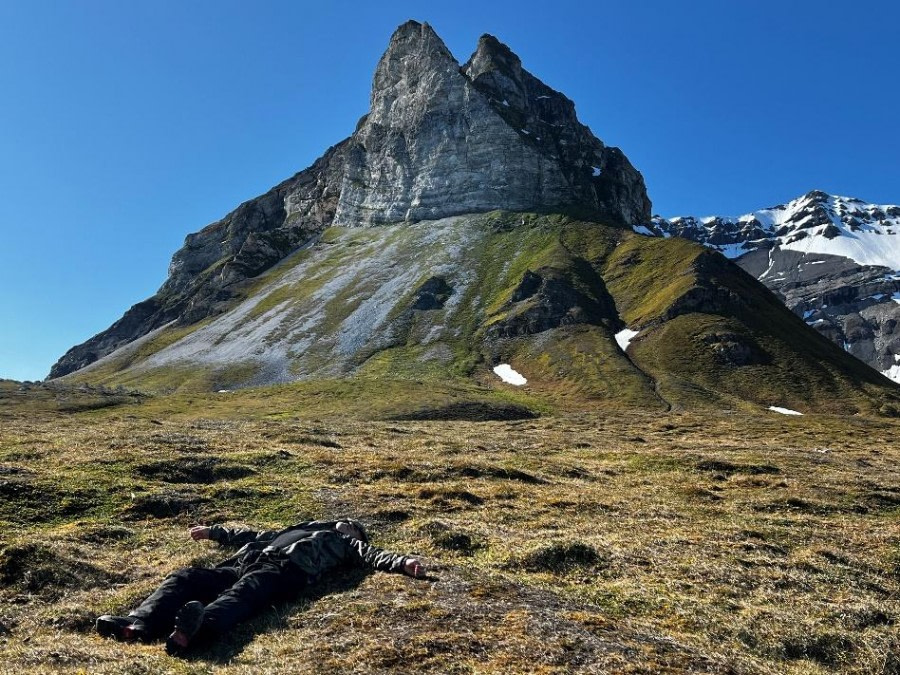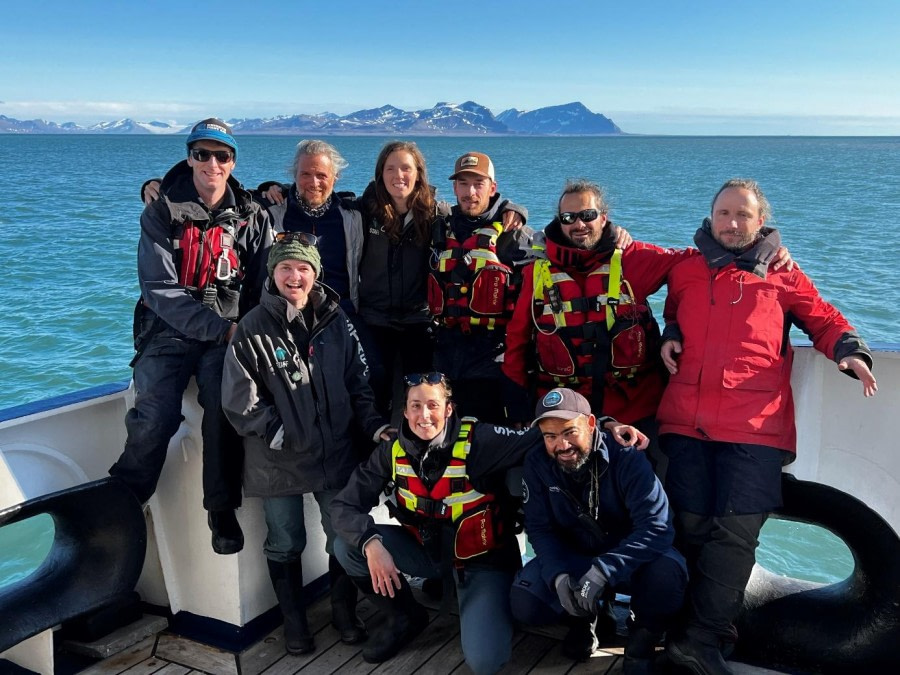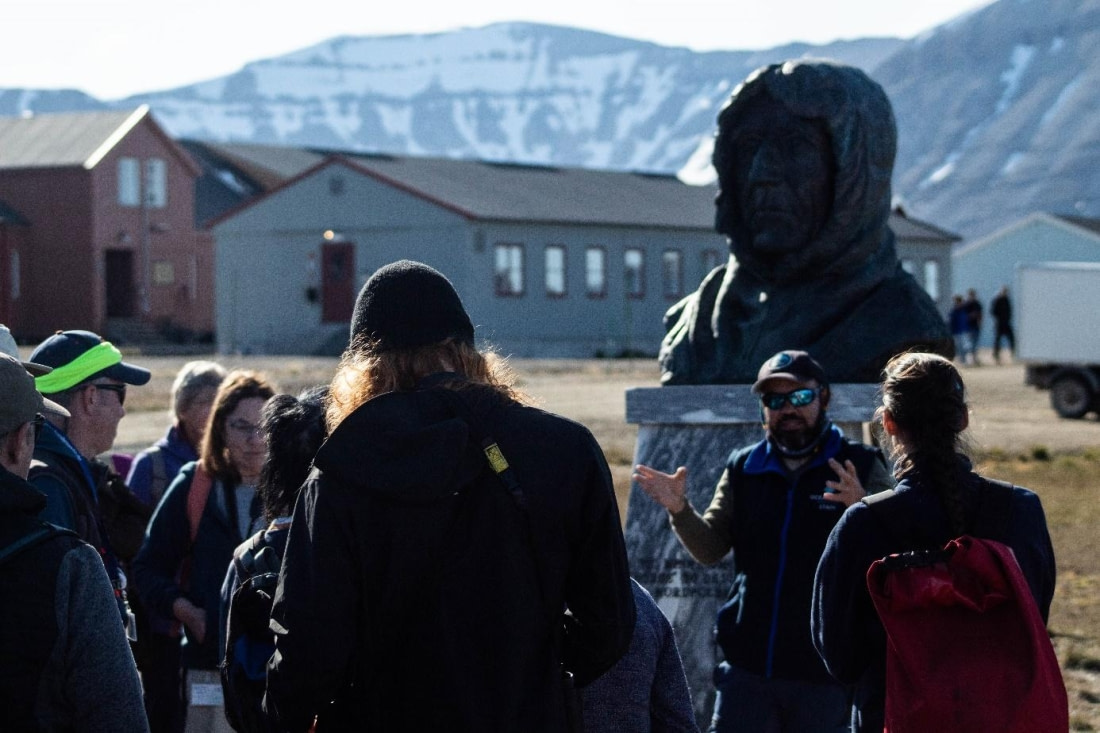| Datum: |
07.07.2023 |
| Position: |
78°57.4’N / 012.01.7’E |
| Wind: |
NW 2 |
| Wetter: |
Clear |
| Lufttemperatur: |
+16 |
Summery hot weather, complete calm, and not a single cloud in the sky marked the morning of our first truly expedition day. We woke up and leisurely made our way to the restaurant, where breakfast awaited us. Meanwhile, Plancius slowly cut through the glassy waters of Kongsfjorden. Some of us, driven by curiosity, gathered at the bow to observe the surrounding landscapes and take photographs. The group of ornithologists was already scanning for local bird species.
Across from Ny-Ålesund, the northernmost inhabited settlement in the world, lies the large island of Blomstrandhalvøya. On this island stands Ny-London, a tiny piece of land that never became a populated place. To this day, you can still see two cabins, remnants of a steam engine, and an old rusty crane. All of this is nothing but a monument to an ambitious yet failed marble mining project. It is precisely there that we planned to have our landing.
Before embarking on our first expeditionary shore trip, we had to listen to a safety briefing and the rules of conduct in the constant presence of the threat of polar bears. Philipp, our expedition leader, gathered everyone in the observation lounge and provided a detailed explanation of how to behave on land and how to properly disembark from the Zodiacs.
Before we knew it, we were on the shore. The Zodiacs shuttled back and forth, transporting passengers while the guides loaded their rifles. Meanwhile, we folded our life jackets into a large orange bag and looked around with interest. The guides divided us into three groups: long hikers, medium hikers, and leisurely hikers. We each set off on our own paths. We had about an hour and a half, so we had to hurry.
The beauty was all around us! The Arctic landscape was so stunning and diverse. The fjord was surrounded by mountains, their slopes here and there still covered in loose summer snow. Enormous glaciers majestically flowed into the sea, continuing their journey as icebergs in the distance. The entire surface of the fjord was dotted with these icy blocks.
In a way, it's sad because it's their final journey. On the other hand, one can only rejoice for the water droplets that once evaporated from the ocean's surface, fell as snow on the glacier's top, and after spending thousands of years in cold captivity, are preparing to become part of the ocean once again. For them, it's a homecoming. For us, it's an opportunity to delight our eyes with the harsh beauty of the Arctic.
The terrain was rocky, but even in such inhospitable conditions the low-growing northern vegetation asserts its right to live. Mountain avens was in blossom on the green carpets of polytrichum moss, with its white flowers standing out vividly against the dark green leaves. Moss campion bloomed, painting the once-green moss cushions in shades of purple. Alpine bistort flowers stretched upward with their bright yellow cups. In some narrow crevices between boulders, the purple saxifrage still bloomed. This plant is the first to flower as soon as the ground is freed from its snowy blanket. In July the time of the purple saxifrage passes, but it refuses to accept it and persistently continues to bloom in shady places.
On the hill, there sat a pair of long-tailed skuas. We did not approach too closely, observing them from a distance, as we didn’t want to disturb the young parents. Everywhere we heard the chirping of snow buntings, the only songbirds in these latitudes. The small bird, resembling a sparrow, flitted back and forth, pecking at whatever it could find.
The red-throated diver is almost motionless by contrast. It glides gracefully across the surface of the pond, with its pointed beak and dignified presence. It's a rare bird, so we photographed it from a distance. It was accompanied by long-tailed ducks. They all nest on tiny islands in the middle of the pond where Arctic foxes can’t reach them.
Then our time was up. We returned to the landing site, put on our life jackets, and headed back to the ship. The tables were already set, and the buffet was overflowing with food. After lunch we docked in Ny-Ålesund. Once a notorious Norwegian coal mining settlement, it is now one of the leading research centers for studying the Arctic's nature. The gangway was lowered, and we disembarked at the pier.
The settlement is incredibly tiny. It only takes ten minutes to cross it from one end to the other. Nevertheless, it has its own museum, shop, and the world's northernmost post office. In the center of the village stands a bust of Roald Amundsen. It was from here that this legendary Norwegian polar explorer began his trans-Arctic flight to Alaska via the North Pole, etching his name forever into the annals of the World history. And just a few hundred meters from the western border of the settlement, the same iron mast still stands from which Amundsen and the other members of his crew boarded their airship, the "Norge."
Barnacle geese wandered across the tundra, fearing no one. But the Arctic terns dive-bombed our heads, eager to peck at us. Some succeeded. The only way out was to raise our hands, or better yet, a stick.
But then we witnessed not just a whirlwind but a whole tornado of Arctic terns! They screamed, flapped their wings, and took turns attacking an unfortunate fox. With its tail between its legs and ears flattened, it raced for dear life toward the nearest shelter. It found refuge under an old narrow-gauge steam train that still stands by the pier as a monument to Ny-Ålesund's coal mining past. We returned to the ship, and soon the Plancius cast off its moorings, setting course northward.
